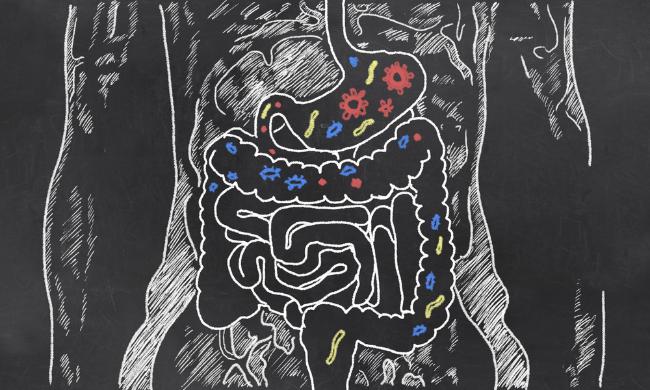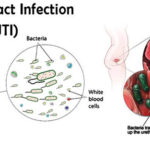Streptococcus peritonitis represents a severe, often life-threatening infection of the peritoneal cavity, which can lead to widespread abdominal inflammation and sepsis. While Streptococcus pneumoniae is the most common cause, other species such as Streptococcus pyogenes can also contribute to the development of complicated peritonitis. In this article, we will explore the pathophysiology, clinical manifestations, diagnosis, and treatment of complicated Streptococcus peritonitis, providing a comprehensive overview for medical professionals and researchers seeking to enhance their understanding of this critical condition.

What is Complicated Streptococcus Peritonitis?
Peritonitis refers to inflammation of the peritoneum, the thin layer of tissue that lines the abdominal wall and covers the organs within the abdomen. When Streptococcus bacteria invade this sterile environment, they can cause significant infection, leading to complicated peritonitis.
Complicated Streptococcus peritonitis often occurs in patients with predisposing factors such as compromised immune systems, abdominal trauma, or preexisting abdominal conditions like appendicitis or diverticulitis. The infection can rapidly progress, resulting in widespread sepsis, organ dysfunction, and a high risk of mortality if not treated promptly.
Pathophysiology of Streptococcus Peritonitis
The pathogenesis of Streptococcus peritonitis involves the introduction of bacteria into the peritoneal cavity, either through the gastrointestinal tract, surgical procedures, or direct extension from nearby infected organs. Streptococcus bacteria release toxins that disrupt the integrity of the peritoneal lining, leading to increased permeability and the infiltration of immune cells, which perpetuate inflammation.
As the infection progresses, the body’s immune system may struggle to contain the bacteria, leading to the spread of infection into the bloodstream and subsequent sepsis. This chain of events highlights the importance of early detection and intervention to prevent further complications.
Symptoms of Complicated Streptococcus Peritonitis
The clinical presentation of Streptococcus peritonitis can vary, but common symptoms include:
- Abdominal pain: The hallmark symptom, often described as severe and diffuse.
- Abdominal tenderness: The peritoneum becomes inflamed and highly sensitive to touch.
- Fever and chills: As the body responds to infection, fever is a typical response.
- Nausea and vomiting: Gastrointestinal involvement is common.
- Signs of sepsis: Tachycardia, hypotension, and altered mental status can develop if the infection spreads.
In cases of complicated peritonitis, the infection can spread rapidly, leading to multi-organ failure and significant morbidity.
Risk Factors for Developing Complicated Peritonitis
Certain factors predispose individuals to developing complicated Streptococcus peritonitis. These include:
- Immunocompromised states: Conditions such as diabetes mellitus, chronic renal failure, or immunosuppressive therapy (e.g., chemotherapy) increase the susceptibility to infections.
- Abdominal surgery or trauma: Post-surgical patients or those with abdominal injuries are at an elevated risk of developing peritonitis.
- Chronic gastrointestinal conditions: Diseases like diverticulitis, appendicitis, and Crohn’s disease may predispose patients to secondary bacterial infections.
- Presence of a foreign body: Intra-abdominal devices such as peritoneal dialysis catheters can serve as a portal for infection.
Understanding these risk factors is crucial for clinicians when managing patients with abdominal symptoms, as early identification can significantly improve outcomes.
Diagnosis of Complicated Streptococcus Peritonitis
Accurate and prompt diagnosis is key to preventing the severe complications of complicated Streptococcus peritonitis. The diagnostic process typically involves the following:
1. Clinical Evaluation
Healthcare providers begin with a thorough clinical examination, assessing for signs of peritonitis such as abdominal tenderness, guarding, and distension. A comprehensive patient history, including any recent abdominal surgery or trauma, is essential in narrowing down the differential diagnosis.
2. Laboratory Tests
Laboratory tests are instrumental in confirming the presence of infection. Key tests include:
- Complete blood count (CBC): Elevated white blood cell count (leukocytosis) is often seen in bacterial infections.
- Blood cultures: These are crucial for identifying the specific causative organism and determining its antibiotic susceptibility.
- Peritoneal fluid analysis: Aspiration and analysis of peritoneal fluid (paracentesis) can help identify bacteria and assess the severity of infection.
3. Imaging Studies
Imaging techniques, such as abdominal X-rays, ultrasound, or CT scans, are used to evaluate the extent of the infection, identify abscesses, and check for free air (which may indicate perforation of the gastrointestinal tract).
4. Microbiological Cultures
Once peritoneal fluid is obtained, microbiological cultures are performed to identify the causative pathogen. Streptococcus species can be isolated and differentiated through standard culturing methods, such as Gram staining and biochemical testing.
Treatment of Complicated Streptococcus Peritonitis
The management of complicated Streptococcus peritonitis involves both medical and surgical approaches, tailored to the severity of the infection.
1. Antibiotic Therapy
Empirical broad-spectrum antibiotics are initiated immediately upon suspicion of peritonitis. Once the causative organism is identified, antibiotic therapy should be adjusted accordingly. For Streptococcus peritonitis, penicillin-based regimens are commonly used, although other antibiotics may be added based on culture results, particularly if polymicrobial infections are identified.
2. Surgical Intervention
In many cases, surgical intervention is required to manage the source of infection. This may include drainage of abscesses, removal of infected tissues, or correction of any underlying conditions (such as perforated bowel). Laparotomy is frequently performed in severe cases to clean the peritoneal cavity and remove necrotic tissue.
3. Supportive Care
Supportive care, including intravenous fluids, electrolyte management, and nutritional support, is crucial to stabilize the patient and promote recovery. In cases of sepsis or organ failure, intensive care unit (ICU) admission may be necessary.
4. Management of Sepsis
In severe cases, early recognition and treatment of sepsis are vital to improving survival rates. Sepsis management includes the use of vasopressors to maintain blood pressure, mechanical ventilation if needed, and renal replacement therapy for patients with kidney failure.
Prognosis and Outcome
The prognosis of complicated Streptococcus peritonitis depends on several factors, including the patient’s overall health, the promptness of treatment, and the severity of the infection. In general, mortality rates are higher in elderly patients and those with underlying comorbidities. Early intervention and appropriate antibiotic therapy, however, significantly improve the chances of recovery.
Risk Factors for Poor Prognosis
- Delayed diagnosis and treatment
- Advanced age
- Comorbid conditions, especially immunosuppression
- Extensive intra-abdominal infection or abscess formation
Prevention of Streptococcus Peritonitis
Preventive measures focus primarily on reducing the risk of intra-abdominal infections. These include:
- Appropriate use of antibiotics: Prophylactic antibiotics may be given to patients undergoing abdominal surgery or invasive procedures.
- Proper management of underlying conditions: Effective treatment of conditions like appendicitis or diverticulitis can help prevent the development of peritonitis.
- Post-operative care: Vigilance in monitoring for signs of infection after abdominal surgery is essential in preventing peritonitis.

